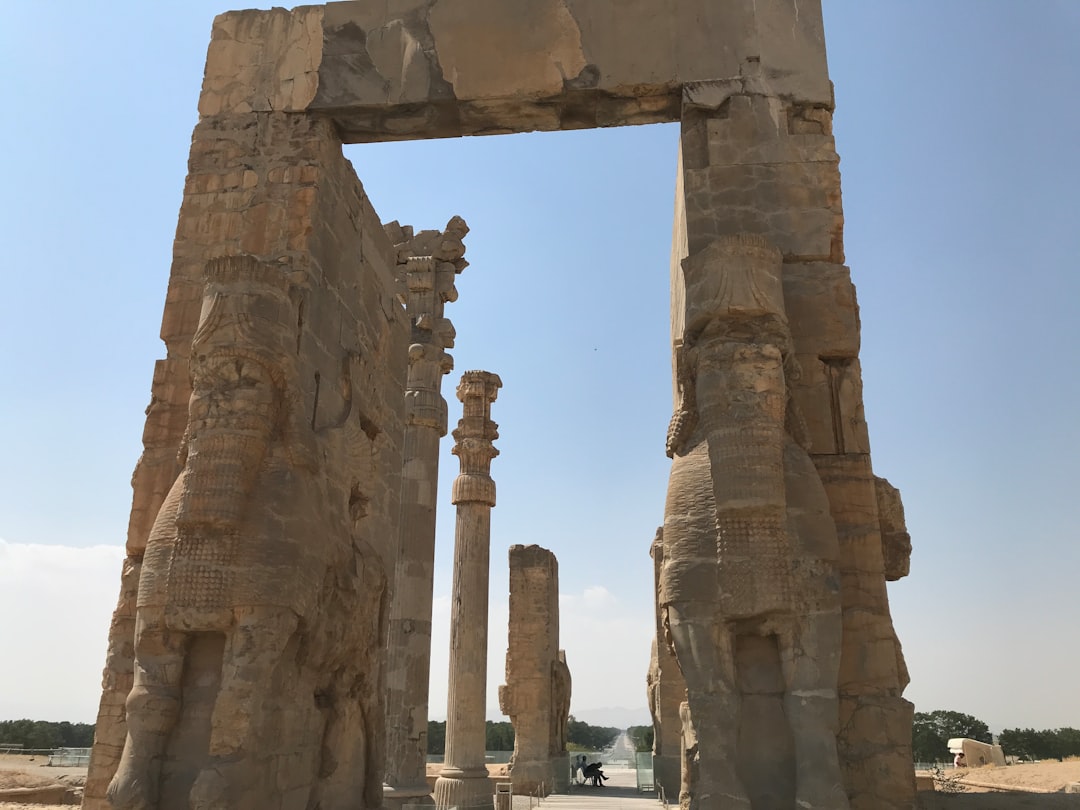Persian culture—one of the world’s oldest continuous civilizations—speaks to us not only through its poetry and architecture, but also through a rich visual language of symbols. These motifs, carried down through millennia, encode philosophical ideas, spiritual beliefs, and aesthetic values. In this post, we’ll explore four of the most iconic Persian symbols: the Faravahar, the Simurgh, the paisley (boteh), and the cypress tree. By the end, you’ll see how these images connect Iran’s ancient past with its vibrant present.
1. The Faravahar: Wings of Divine Guidance
What it is:
The Faravahar (or “Farohar”) is the best‑known emblem of Zoroastrianism, the pre‑Islamic faith founded by Zarathustra around 1,500 BCE. It depicts a human figure rising from a winged disc.
Key Elements & Meanings:
-
The Human Figure: Symbolizes the soul or the spirit of humanity, reminding us that each individual is responsible for choosing between good and evil.
-
The Ring in Hand: Represents loyalty and commitment—to truth, to righteousness, and to the covenant between humans and the divine.
-
The Three Layers of Feathers: Stand for the Zoroastrian principles of Good Thoughts, Good Words, and Good Deeds.
-
The Two Streamers: On either side suggest the moral choice between the “path of joy” and the “path of sorrow.”
Where to see it today:
Modern Iranians—Muslim and Zoroastrian alike—wear Faravahar jewelry, paint it on walls, and display it in public spaces as a proud reminder of their cultural heritage.
2. The Simurgh: A Mythic Healer and Herald of Wisdom
What it is:
The Simurgh is a composite, benevolent bird from Persian mythology—often depicted with feathers of every color and possessing the wisdom of ages. It appears most famously in Ferdowsi’s epic Shahnameh (“Book of Kings”), where it rescues the prince Zāl and later advises his son, the hero Rostam.
Key Associations:
-
Healing & Transformation: The Simurgh’s tears are said to cure disease, and its feathers can purify poisoned water—symbolizing rebirth and renewal.
-
Divine Knowledge: As an ageless creature, the Simurgh bridges the human and celestial realms, guiding lost heroes and offering counsel.
-
Unity of All Beings: In the Sufi poem Conference of the Birds, the Simurgh emerges as the spiritual goal that each bird‑soul must find within itself—teaching that the divine is already within us.
Artistic Legacy:
From miniature manuscripts to modern sculpture, the Simurgh continues to inspire Iranian artists and storytellers as a symbol of hope and enlightenment.
3. The Paisley (Boteh): An Infinite Teardrop of Life

What it is:
Known in Persian as boteh or boteh‑jegheh, the paisley motif resembles a curled leaf, flame, or stylized cypress. Traced back to Sassanian textiles of the 6th century CE, it became globally famous in 19th‑century Europe—hence the English name “paisley.”
Symbolic Layers:
-
Life & Fertility: The sprouting bud suggests growth, abundance, and the continuity of life.
-
Fire & Light: Its flame‑like shape evokes Zoroastrian fire temples, where fire represents divine power and purity.
-
Elegance & Eternity: The paisley’s endless curve embodies the idea of infinity—of time, love, and the soul’s journey.
Where to spot it:
Look for boteh woven into Kerman and Kashan carpets, printed on silk scarves, and embroidered on traditional termeh fabrics.
4. The Cypress Tree: Evergreen Symbol of Virtue

What it is:
The cypress (sarv) is revered in Iran as a stately, long‑lived tree. Pliny the Elder and other classical writers noted its prevalence in Persia; local tradition links it to Zoroastrian sacred groves and royal gardens.
Why It Matters:
-
Resilience & Immortality: Always green, the cypress stands for strength, endurance, and the soul’s immortality.
-
Sanctuary & Solitude: Often planted around mausoleums and holy sites, it marks spaces of reflection and spiritual shelter.
-
Royal Authority: Persian kings frequently used cypress imagery on coins and architecture to evoke stability and continuity.
Modern Presence:
From the towering cypresses in Shiraz’s Hafezieh (Tomb of Hafez) to stylized representations in municipal logos, the tree remains a living emblem of Iranian identity.
Bringing It All Together
These four symbols—Faravahar, Simurgh, boteh, and the cypress—are more than decorative motifs. They articulate a worldview that values moral choice, the pursuit of wisdom, the cycles of life, and the virtues of resilience and purity. Whether you encounter them in ancient reliefs, manuscripts, Persian carpets, or urban street art, each design invites you to pause, decode its message, and connect with a civilization that has been weaving symbols into its story for over 2,500 years.
Further Reading & Exploration
-
Shahnameh by Ferdowsi: Dive into epic tales featuring the Simurgh and other legendary heroes.
-
Zoroastrianism Today: Discover how Faravahar continues to inspire faith and identity across communities.
-
Textile Traditions of Persia: Trace the evolution of the paisley from royal garments to global fashion.
Unlock these symbols, and you unlock a deeper understanding of Iran’s enduring cultural tapestry.





